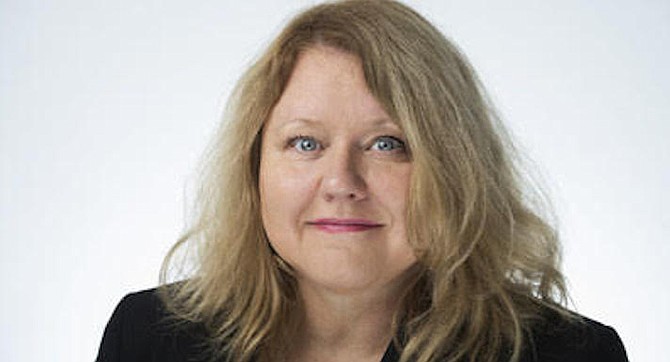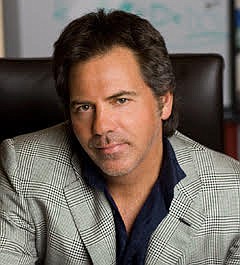 Facebook
Facebook
 X
X
 Instagram
Instagram
 TikTok
TikTok
 Youtube
Youtube

On June 17, after the announcement that billionaire Patrick Soon-Shiong had closed a $580 million deal to take over the Los Angeles Times and San Diego Union-Tribune, USC journalism professor and former Wall Street Journal reporter Gabriel Kahn penned a six-point letter of advice to the wealthy Angeleno regarding the success of his new venture.

Number four was headlined, "Please, please, please, no 'synergies.'"
"Synergy is the poison chalice of every media deal (RIP AOL-Time Warner)," wrote Kahn. "It’s the tantalizing lie bankers tout and credulous investors expect in their returns. In practice, it only ever means short-sighted headcount reductions. The Times has already been through that meat grinder."

Three days later, Kahn got at least part of the newly-minted publisher's answer in the form of a press release by the Times announcing the naming of Kris Viesselman to the newly created post of Chief Transformation Editor.

“She will work closely with editorial and business-side colleagues at the Times and she will have primary responsibility for developing systems and synergies between the Times, the San Diego Union-Tribune and other publications in the California News Group.”
Added Times executive editor Norman Pearlstine, "Kris will have major responsibility for charting our future, building digital, video and other products that will be distributed across multiple platforms for the benefit of new and existing audiences."
Eight years ago, in June 2010, the story was hauntingly similar. The U-T was owned by Platinum Equity, the Beverly Hills-based vulture fund run by Flint, Michigan-bred Tom Gores, and Viesselman headed a phalanx of would-be makeover artists brought to San Diego by Platinum to revive the newspaper's sagging fortunes.
"Some of these changes are difficult for us at the U-T," wrote editor Jeff Light in a letter to readers. "We must be able to animate our content for the Web, phones, and tablets. So, we will be adding more videographers and graphics reporters to the staff."
"We will have a new mix of skills in our newsroom, and, in some cases, a new mix of people," added Light. "Most of our staff will remain in place. But we have new people arriving, and others departing."
"Kris Viesselman, formerly director of interactive publishing and digital product development at National Geographic, is our new managing editor and creative director," said the letter. "She will lead a redesign of our newspaper, which will roll out beginning in August."
The touted elixir produced less than impressive results, and eighteen months later, in November 2011, Gores unloaded the paper, still hemorrhaging readers, to Republican kingpin Douglas Manchester, whose own online and video experiments later ignominiously tanked.
While editor Light has remained in San Diego to preside over the U-T's downhill run, Viesselman headed back to Washington in February 2014, per her LinkedIn profile. She spent about two years as founder and executive producer of Electric Ivy, LLC., a video company, before taking over as senior V.P., editor in chief, and chief creative officer at CQ and Roll Call, where she's been employed since.
“I am thrilled to be returning to California to work with the Los Angeles Times and the San Diego Union-Tribune – two brands that I love – to help create a journalism-fueled strategy that will ensure that these great institutions thrive,” says Viesselman in the news release from the Times.


On June 17, after the announcement that billionaire Patrick Soon-Shiong had closed a $580 million deal to take over the Los Angeles Times and San Diego Union-Tribune, USC journalism professor and former Wall Street Journal reporter Gabriel Kahn penned a six-point letter of advice to the wealthy Angeleno regarding the success of his new venture.

Number four was headlined, "Please, please, please, no 'synergies.'"
"Synergy is the poison chalice of every media deal (RIP AOL-Time Warner)," wrote Kahn. "It’s the tantalizing lie bankers tout and credulous investors expect in their returns. In practice, it only ever means short-sighted headcount reductions. The Times has already been through that meat grinder."

Three days later, Kahn got at least part of the newly-minted publisher's answer in the form of a press release by the Times announcing the naming of Kris Viesselman to the newly created post of Chief Transformation Editor.

“She will work closely with editorial and business-side colleagues at the Times and she will have primary responsibility for developing systems and synergies between the Times, the San Diego Union-Tribune and other publications in the California News Group.”
Added Times executive editor Norman Pearlstine, "Kris will have major responsibility for charting our future, building digital, video and other products that will be distributed across multiple platforms for the benefit of new and existing audiences."
Eight years ago, in June 2010, the story was hauntingly similar. The U-T was owned by Platinum Equity, the Beverly Hills-based vulture fund run by Flint, Michigan-bred Tom Gores, and Viesselman headed a phalanx of would-be makeover artists brought to San Diego by Platinum to revive the newspaper's sagging fortunes.
"Some of these changes are difficult for us at the U-T," wrote editor Jeff Light in a letter to readers. "We must be able to animate our content for the Web, phones, and tablets. So, we will be adding more videographers and graphics reporters to the staff."
"We will have a new mix of skills in our newsroom, and, in some cases, a new mix of people," added Light. "Most of our staff will remain in place. But we have new people arriving, and others departing."
"Kris Viesselman, formerly director of interactive publishing and digital product development at National Geographic, is our new managing editor and creative director," said the letter. "She will lead a redesign of our newspaper, which will roll out beginning in August."
The touted elixir produced less than impressive results, and eighteen months later, in November 2011, Gores unloaded the paper, still hemorrhaging readers, to Republican kingpin Douglas Manchester, whose own online and video experiments later ignominiously tanked.
While editor Light has remained in San Diego to preside over the U-T's downhill run, Viesselman headed back to Washington in February 2014, per her LinkedIn profile. She spent about two years as founder and executive producer of Electric Ivy, LLC., a video company, before taking over as senior V.P., editor in chief, and chief creative officer at CQ and Roll Call, where she's been employed since.
“I am thrilled to be returning to California to work with the Los Angeles Times and the San Diego Union-Tribune – two brands that I love – to help create a journalism-fueled strategy that will ensure that these great institutions thrive,” says Viesselman in the news release from the Times.
Comments